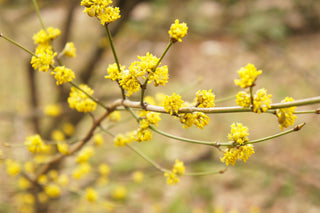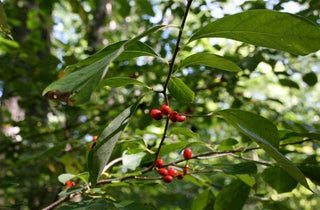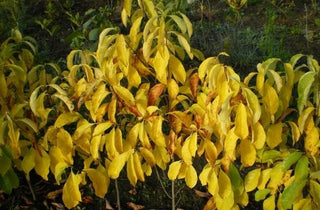Common Spicebush - Lindera benzoin
- Unit price
- /per
Phonetic: lin-DER-ah BEN-zo-een
Shrubs can not be shipped.
#1 Gallon 15-18” shrub
Common Spicebush has a broad, rounded habit which typically is found in moist locations. Clusters of tiny, aromatic, greenish-yellow flowers bloom along the branches in early spring before the foliage emerges. Male and female flowers grow on separate plants, with the male flowers being larger and showier than the female ones. Flowers of female plants give way to bright red drupes which mature in fall and are attractive to birds. The plant is dioecious, needing both male and female plants to set fruit. Light green leaves turn an attractive yellow in autumn. Leaves are aromatic when crushed. The flowers are cross-pollinated by various insects, particularly small bees and various flies. Spicebush is a favorite food plant of the spicebush swallowtail and the promethea silkmoth. It also supports the caterpillars of the cynthia moth, imperial moth, and the tulip tree beauty.
- Hardiness Zone: 4-9
- Native Northeast Region: BONAP Map
- BONAP Map Key Color Guide: Map Color Key
- Sun Exposure: Partial shade to full sun
- Flower Color: Greenish yellow
- Bloom Time: April
- Soil Type: Medium to Moist
- Mature Plant Size: 6-12' Height, 6-12' Width
- Plant Spacing: 10'
- Host Plant: Spicebush Swallowtail
- Attracts: Butterflies, Bees, Birds
- Deer Resistant
- Advantages: Aromatic, Spring color, Food source
- Landscape Uses: Woodland gardens, naturalized, rain gardens, pond side
- Companion Plants: Native Azalea
Adding product to your cart



